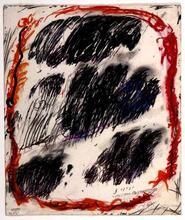Rebecca Solomon
Born to a prosperous Jewish merchant family living in the Bishopsgate district of London, Rebecca Solomon studied at the Spitalfields School of Design with Pre-Raphaelite artists. Working within the genre form, Solomon had a keen eye for the role of women and minorities in the rigid class system of the Victorian era, and her work noted the injustice in the lives of the rich and poor. She exhibited almost annually at the Royal Academy for seventeen years, and at the British Institution and Dudley Gallery. Active for social causes, Solomon was one of 38 women artists who petitioned the Royal Academy of Art to allow women to study in 1859. She was killed in an accident in London on November 20,1886.
Rebecca Solomon’s success as a professional artist was remarkable in the mid-nineteenth century, a time when women artists were the exception rather than the rule. However, that she was among the first Jewish women artists, if not the first, makes her career and artwork even more important. While her artistic style conformed to the most popular art of the time—scenes from everyday life known as genre paintings—she used her visual images to critique ethnic, gender, and class prejudice in Victorian England.
Early Life and Family
Born on September 26, 1832, the seventh child of Meyer (Michael) and Kate (Catherine) Levy Solomon, she was one of three Solomon children to become artists. Abraham, nine years her elder, painted genre scenes with a comedic touch, and Simeon, eight years younger than Rebecca, was a Pre-Raphaelite artist whose work remains popular today. There were five other children in the family: Aaron, Betsy, Isaac, Ellen, and Sylvester.
The Solomon family immigrated to England from the Low Countries (possibly Holland or Germany) in the late eighteenth century and established a successful manufacturing business. As one of the first Jewish families accepted in London’s Bishopsgate neighborhood, the Solomons’ wealth also assured them social status. Within London’s close-knit Jewish community, they were eager to maintain their Jewish heritage while assimilating into fashionable society. That Meyer Solomon became the first Jew to be honored with the Freedom of the City of London is a measure of their success.
Artistic Career
Abraham and Simeon trained at the Royal Academy of Art Schools, but since the Academy did not admit women students Rebecca attended the less prestigious Spitalfields School of Design. With the encouragement of her artistically inclined mother, she continued her education by working as a background painter in the studios of the Pre-Raphaelite artists John Everett Millais (1829–1896) and Edward Burne-Jones (1833–1898). Rebecca’s first work to be accepted for exhibition by the Royal Academy of Arts was A. Solomon, Esq. 1850, a portrait of either Abraham or her oldest brother Aaron. At that time she was living with Abraham, where she remained until his death of heart disease in 1862. Like most unmarried Victorian women, Solomon lived with her family, mostly her brothers, all of her adult life.
When Rebecca started painting genre scenes, her work demonstrated an observant eye for class, ethnic, and gender discrimination. One critic commented on the wholesome, moral and sometimes humanizing sentiment in her art, not an uncommon element in Victorian painting. However, Rebecca’s Jewish background was probably instrumental in developing her critical consciousness of difference and prejudice. Over the next ten to fifteen years, her artwork explored the plight of women and minorities, and the dominance of class discrimination in English society.
In the late 1850s Rebecca made a successful transition to classical and historical painting, the most highly valued art within the powerful art academies at the time. True to her vision, she continued to include images that reflected the historical foundations of nineteenth-century social injustice. Rebecca was also active in contemporary social reform movements and in 1859 she joined a group of thirty-eight women artists petitioning the Royal Academy of Art to open its schools to women.
Later Life and Legacy
Shortly after Abraham’s death, Rebecca lived with her younger brother Simeon, a notorious libertine, and it was hinted that she adopted his more flamboyant lifestyle. However, Rebecca’s continued observance of Jewish custom and more conservative attitudes belie the rumors. Interestingly, while Simeon’s art centered on the Jewish community and Judaism, Rebecca rarely included such references. Nevertheless, Simeon’s influence is apparent in the Pre-Raphaelite style of Rebecca’s later artwork.
When Rebecca Solomon died on November 20, 1886—after being knocked down by a Hansom cab on Euston Road—she was living alone. Although only fifty-four years old, her art production had diminished and much of her earlier artwork remained unsold. Unfortunately, the majority of her work is unaccounted for, often only recorded in the form of engravings made for publications such as the Illustrated London News. It is not known whether the difficulty of selling her work brought about her decline or, as London gossip would have it, that she was a hopeless alcoholic incapable of work. Nevertheless, the art she produced from the mid-1850s through the 1870s demonstrates not only her involvement with the various art styles and burgeoning social movements of that period, but also a sensibility that reflects her Jewish identity.
Chadwick, Whitney. Women, Art, and Society. London: 1990.
Cherry, Deborah. Painting Women: Victorian Women Artists. London: 1993.
Clayton, Ellen C. English Female Artists. London: 1876.
Daniels, Jeffery. Solomon: A Family of Painters. London: 1985.





